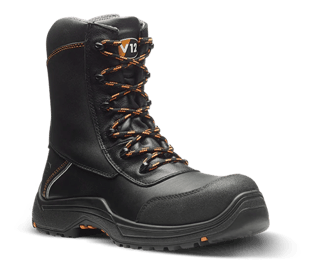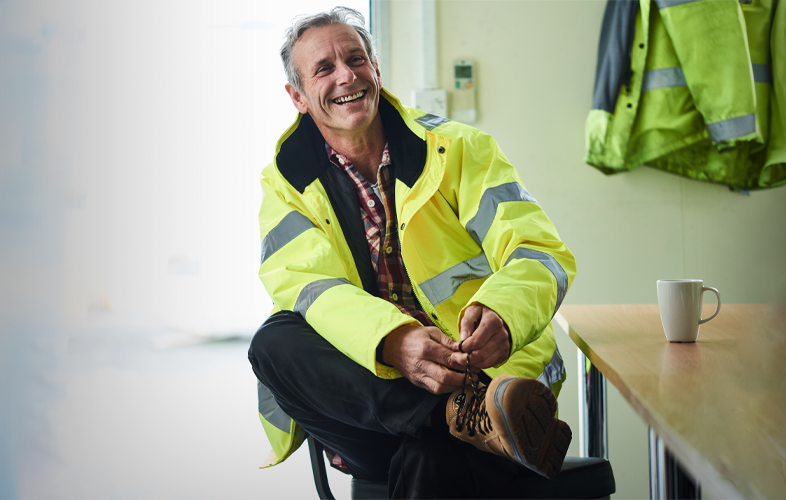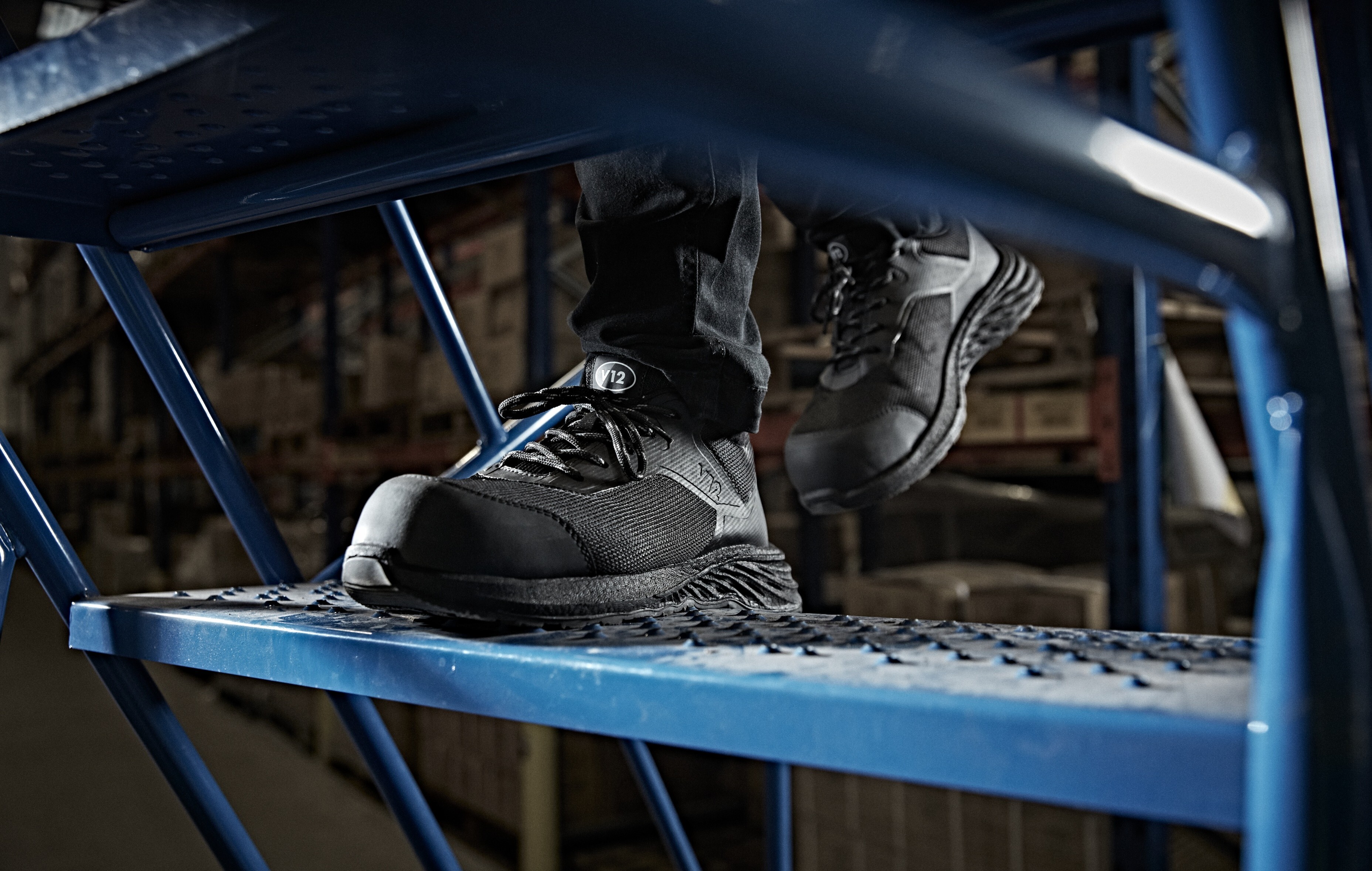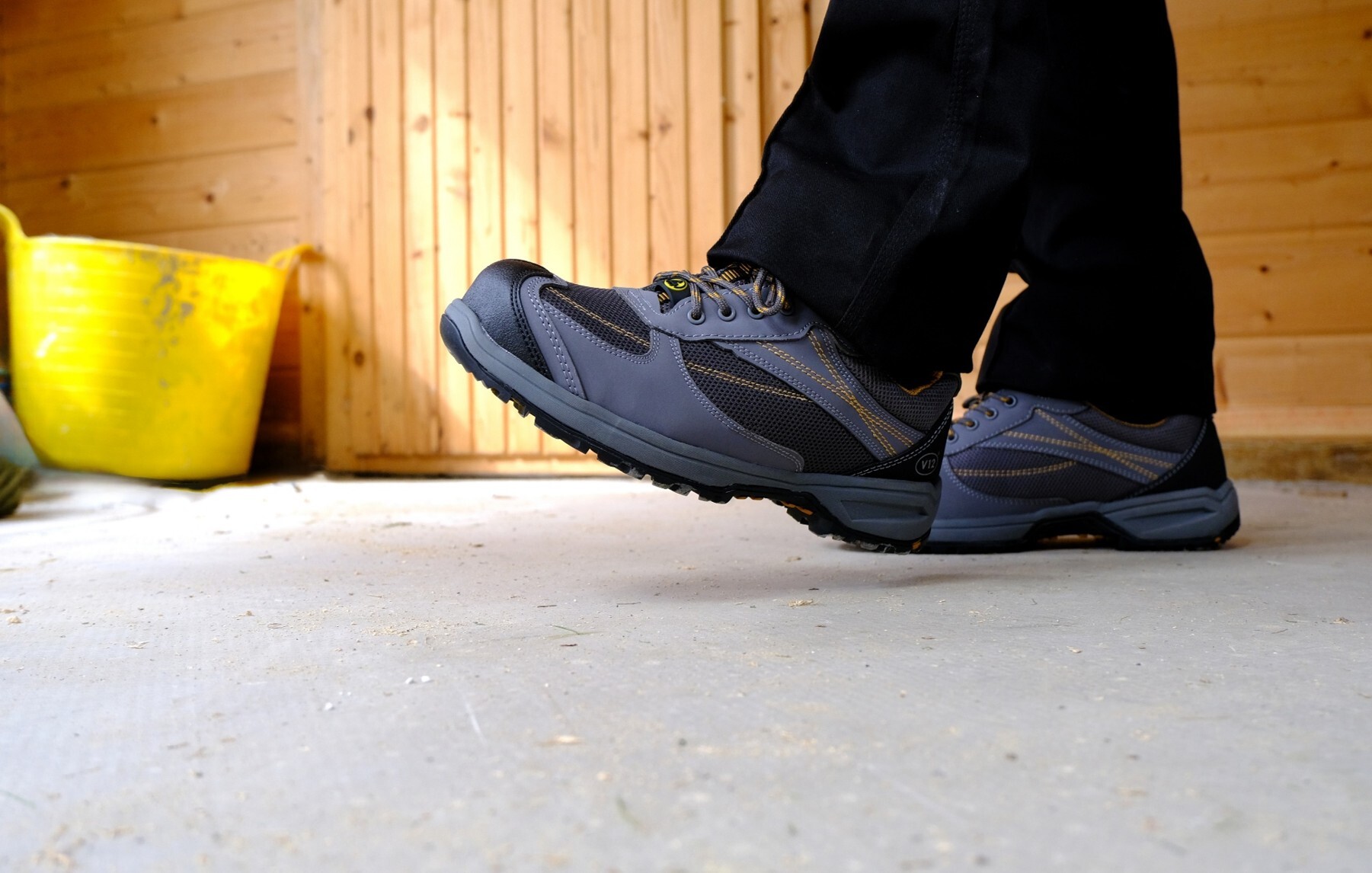A lot of work boot wearers see the pinching and rubbing of feet as an inevitable consequence of wearing new boots. As a result, the question ‘how can I break in my leather work boots fast’ is a common one.
But in this blog, we’re going to show you some simple footwear tips you can put in place that can prevent the need to break in new leather boots and step into your working day focussing on the job in hand.
Firstly, if you’ve bought a new pair of boots and they are hurting your feet, have you considered the following?
Are your boots the right size?
In a recent foot health assessment, V12 discovered 88% of a workforce were wearing the wrong-sized footwear. Many work boot wearers end up enduring very serious foot pain because they are wearing boots for hours at a time which are the wrong size for their feet.
Find out why this is such a common occurrence and what the solution is in this blog.
Are you wearing the right socks?
Wearing work socks with your boots is something we always strongly recommend, as they consolidate the comfort and protection given to you by your boots. But wearing a thick pair of work socks with your new pair of boots is particularly beneficial, as they will encourage the leather to stretch and give you comfort quicker.
Head here to shop our sock range.
Are you lacing your boots properly?
If your boots are loosely laced, it can cause them to slip, meaning the foot moves in and out of the heel area which can lead to rubbing and blistering.
Take a look at the video below: it’ll show you a lacing technique that secures feet firmly within the boot.
Do you have the right fit?
If your boots are built on a generic last (the foot form around which a boot is constructed), painful feet can easily follow. Because the majority of footwear is made in Asia, this can often mean footwear produced there is narrower, as people native to that region have a narrower foot shape.
V12 created its unique last by using over 4,000 global foot scans, so they are wide enough to give a global fit. This eliminates the initial rubbing and pinching that so many endure with a new pair of boots made on a generic last that is often too narrow.
 Ultimately, safety boots built on a specially designed last shouldn’t need breaking in, and it’s important too to note that footwear that isn’t designed on a wide enough last may never be ‘broken in’ because arguably, if they don’t fit, they will never be comfortable.
Ultimately, safety boots built on a specially designed last shouldn’t need breaking in, and it’s important too to note that footwear that isn’t designed on a wide enough last may never be ‘broken in’ because arguably, if they don’t fit, they will never be comfortable.
The benefits of this comfort last was illustrated when, in collaboration with BP, V12 developed the E1300.01 Defiant IGS for wearers working in the Energy Sector.
One of the requirements was that the boots had to be comfortable enough to be worn for long periods of time and did not need breaking in.
Because of the V12 last design and the wider foot shape it accommodates - plus Defiant’s cut-away padded collar and supple, breathable leather - this boot ticked all comfort and safety boxes.
Pictured: The E1300.01 Defiant IGS - designed with foot health and comfort in mind, this safety hi-leg has become the number one choice for many Oil and Gas companies globally.
TIPS FOR BREAKING IN NEW BOOTS
While the above considerations will significantly decrease the chances of foot pain when wearing a new boot, if you’re still experiencing initial discomfort, here’s what we recommend.
1. Soften the leather ✅
Soften and nourish your boots’ upper by treating it with V12’s V0011 Leather Food. This blend of natural oils and waxes will keep the leather supple and protected - learn more about it here.
Want some more tips on how to care for your boots? Read our handy blog on how to extend your footwear’s life here.
2. Wear them in gradually ✅
Stepping into a new pair of boots and then promptly walking in them for 8+ hours could create some initial discomfort, so if you have the opportunity, wear them around the house beforehand for a brief period to give your feet a chance to get used to the new and stiffer leather.
3. Don’t submerge them in water 🚫
There are a lot of theories about how to break in boots, but soaking a new safety product in water isn’t one we recommend, particularly if they aren’t waterproof!
Find your next work boot
If you’re thinking about your next pair of safety boots, the V12 Boot Finder can help you.
Simply click below, add in a few details about your safety requirements, and we’ll give you our instant and expert safety boot recommendations – giving you exceptional comfort and a perfect fit.






